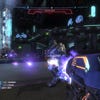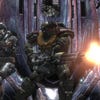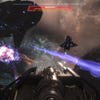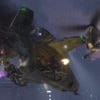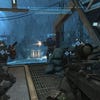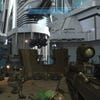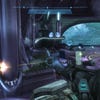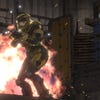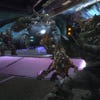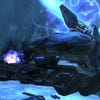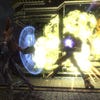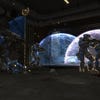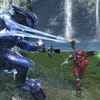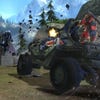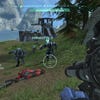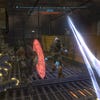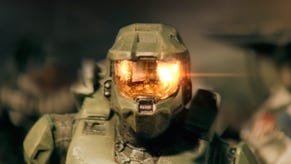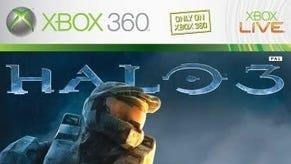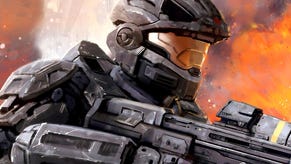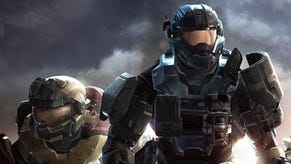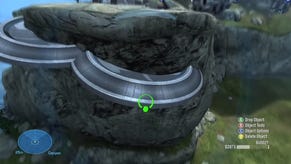Halo: Reach
The long goodbye.
Not visually, however. Reach might give away some frame rate here and texture detail there to more scripted rivals, but it is a stunning-looking game, with a huge tonal range and a a great eye for dramatic staging. Forget any worries that it would mark Halo's retreat into the world of brown of the military FPS. It's maybe a touch less vivid, more autumnal; but rich colours, warm lighting, artfully weathered textures and some astonishing, painterly skyboxes combine to give it the hand-crafted look of 1980s airbrush sci-fi art, and believe me when I say I mean that as a compliment.
One of the things you most want from a Halo game is to witness visual drama on an immense scale - to "see things you people wouldn't believe", like Blade Runner's Batty - and Reach doesn't disappoint here, either. You'll watch giant star cruisers disintegrate, city-cized Covenant war camps twinkle under a night sky, mile-wide death rays scour a burning city as you pilot a Falcon chopper between skyscrapers. It's maybe a little more restrained than the orgasmic spectacle of Halo 3, but that's not saying much, nor is it a bad thing. Marty O'Donnell's score soars, pounds and rocks out for all its might in an attempt to match this visual bombast, but it can't summon a memorable theme this time.
Bizarrely for a prequel - but inevitably for a game that's such a transparent attempt to close the book on Bungie's Halo - the campaign often feels like a valedictory compilation of the best bits of the first three games. Here's the moonlit sniper attack on a Covenant base; here's the Scorpion tank trundle through a swirling maelstrom of enemy vehicles; here are the running battle in a rural sward, the entrenched firefight amid towering architecture, the escape from a doomed ship.
Reach does have some new tricks up its sleeve. Moments where you have to defend a position against enemy waves, Firefight-style, have their own tension but do sap the immense forward momentum that keeps you going when things, inevitably, get brutally tough. The most memorable chapter, Long Night of Solace, launches you into space at the controls of the Sabre orbital attack ship in a remarkably accomplished dogfight sequence, as well as staging an incredible, muffled, low-gravity battle on board an ailing Covenant corvette.
Your Noble companions aren't quite as smart as they should be, but the fact they can't die (unless the story requires it) often provides welcome cover, while a new system of assigning you a named fire team of marines and keeping track of them in the UI encourages you to keep allies alive. Perhaps the biggest change in the campaign is the necessarily complete absence of the glutinous spam horror that is the Flood. Many will welcome that, although I found the reliance on throwing pairs of Hunters at you just as cheap in its way, and I missed the multi-factional battles that have been a Halo trademark since the first game's memorable twist.
That said, the enemy design is better overall than Halo 3's, with less reliance on Brute force and a more varied range of foes fighting in more complex configurations. Fans will be delighted to learn that the slippery Elites (in a wide range of ranks, some of them now sporting oddly cute space-suits) have never been so formidable. The AI continues to astound; it may not always be believable, but it's never predictable, and it keeps you on your toes more effectively than any script could.
The Covenant's animal intelligence would be nothing, however, if it wasn't for the superlative level design. As architecture, Reach is out-and-out Bungie's best work - and this from a studio which excels at semi-open, semi-linear levels that offer multiple valid tactical options and encourage free-flowing, organic combat. It's majestic stuff, all the more amazing when you consider that some levels have to allow for the vertical dimension opened up by the jet pack armour ability.


